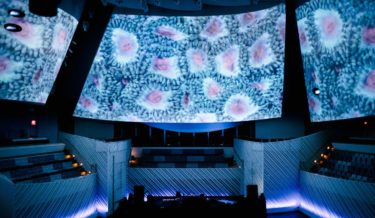Related post
An Incredible A/V Light Show Brings the Walt Disney Concert Hall to Life
Mar 01, 2017
|
Comments Off on An Incredible A/V Light Show Brings the Walt Disney Concert Hall to Life
2762
Rino Stefano Tagliafierro: Optogram “Bloody Faces”
Mar 18, 2016
|
Comments Off on Rino Stefano Tagliafierro: Optogram “Bloody Faces”
2257
A Magical Coral Orgy Took Over Miami’s New World Center
Apr 07, 2017
|
Comments Off on A Magical Coral Orgy Took Over Miami’s New World Center
2658







